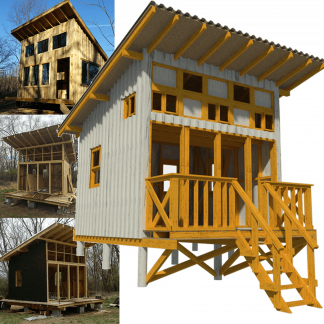Reliable air conditioner repair services are not only about fixing breakdowns but also about maintaining a comfortable indoor climate and energy efficiency. Professional service starts with accurate diagnostics: technicians check the refrigerant circuit, compressor condition, fan operation, control boards, and sensors. After that, they select the best solution — from cleaning coils and recharging refrigerant to replacing worn parts, updating firmware, or adjusting safety systems. This approach extends the lifespan of your AC, lowers electricity bills, and prevents repeated failures during peak summer. Our specialists work with wall-mounted, ducted, cassette, and multi-split systems of various brands, using original or trusted replacement parts, providing transparent cost estimates and warranties.

Why Timely AC Repair Matters
Timely AC repair saves both money and comfort. Any unusual noise, reduced cooling efficiency, or whistling sound during operation is a signal that immediate diagnostics are needed. Using an air conditioner with minor defects often leads to compressor overheating, refrigerant leakage, and higher energy consumption. The sooner a technician eliminates the cause, the lower the risk of a chain reaction where other components such as the fan, expansion valve, or inverter board also fail. Regular servicing and accurate adjustments keep the system operating at its designed efficiency, especially noticeable during heat waves.
Beyond cost savings, it is also a matter of safety and health. Dirty coils and filters reduce air quality, spread odors, and may trigger allergies. Incorrect operating modes can increase humidity and put unnecessary strain on the electrical system. By arranging air conditioner repair at the first signs of trouble, you prevent major breakdowns, minimize downtime, and ensure stable indoor comfort — whether in bedrooms, offices, or even server rooms where precise climate control is critical.
Common Signs Your Air Conditioner Needs Repair
There are several clear signs that your air conditioner requires attention. If you notice warm air coming from the vents, it often means there is a refrigerant leak or compressor issue. Strange sounds like grinding, squealing, or banging indicate mechanical problems that should not be ignored. Poor airflow or weak cooling may point to clogged filters, malfunctioning fans, or duct blockages. Unpleasant odors are another warning, often caused by mold buildup or dirty components. Higher-than-usual energy bills without changes in usage also suggest inefficiency due to hidden faults. Finally, frequent cycling on and off can signal thermostat issues or failing internal parts.
As the saying goes: That which does not kill us makes us stronger. You never really understand a person until you consider things from his point of view. It is not in the stars to hold our destiny but in ourselves.
Typical Problems and Their Solutions
Air conditioners, like any complex system, are prone to different types of malfunctions. One of the most frequent issues is refrigerant leakage, which directly reduces cooling efficiency and increases electricity bills. Without proper repair, the system will continue to lose performance until it eventually stops working altogether. Another widespread problem involves dirty filters or coils that block airflow, force the unit to work harder, and spread dust throughout the room. Cleaning or replacing these components regularly is the simplest way to avoid costly repairs.
Frozen evaporator coils represent another common challenge. When coils ice over, the system struggles to produce cold air and may even shut down. This is often linked to clogged filters or low refrigerant levels. In contrast, a faulty compressor is a more serious issue. As the core of the AC system, the compressor must function properly to circulate refrigerant. When it fails, the unit cannot cool at all, and professional intervention is usually required to repair or replace the component.
Electrical issues can also disrupt air conditioner performance. Tripped breakers, damaged wiring, or defective capacitors can prevent the system from turning on. Unlike filter replacement, these problems demand technical expertise and proper safety precautions.
Professional vs. DIY Air Conditioner Repair
When an air conditioner breaks down, many homeowners wonder whether they should attempt repairs on their own or call a certified technician. While some tasks are safe for DIY, such as cleaning or replacing air filters, other repairs require specialized knowledge and tools. Attempting complex fixes without training may lead to further damage, safety risks, or even voiding the manufacturer’s warranty.
Professional repair services, on the other hand, provide accurate diagnostics, access to original spare parts, and warranties on both labor and materials. Technicians are trained to handle refrigerants, electrical components, and system calibration safely and effectively. Choosing a professional ensures that the root cause of the issue is resolved, not just the symptoms. In the long run, this saves money, preserves energy efficiency, and keeps your AC system running reliably during the hottest months.
Step-by-Step AC Repair Process
A structured approach is essential for effective air conditioner repair. Here is a step-by-step outline of how professionals typically handle the process:
- Initial inspection: Assess system performance, check airflow, and listen for unusual sounds.
- Diagnostics: Use tools to measure refrigerant pressure, test electrical circuits, and evaluate sensor performance.
- Problem identification: Pinpoint whether the issue lies in refrigerant levels, mechanical components, or electronic controls.
- Repair or replacement: Fix leaks, replace faulty parts, clean coils, or recalibrate the system as needed.
- System testing: Run the AC to ensure cooling output, airflow, and energy efficiency are restored.
- Final adjustments: Calibrate thermostat settings, check safety switches, and confirm stable operation.
How to Choose a Reliable AC Repair Company
Selecting the right AC repair company is critical to ensuring quality service and long-lasting results. A reliable provider should have proper licensing, certifications, and experience with a wide range of air conditioning systems. Checking online reviews and customer testimonials can also give valuable insights into the company’s reputation and response time. Transparency in pricing and detailed estimates are equally important, as they help you avoid hidden costs and unexpected charges.
Additionally, a trustworthy repair company should offer warranties on parts and labor, demonstrating confidence in their work. Availability is another factor — companies that provide emergency or same-day service are often better equipped to handle urgent situations. By combining professionalism, reliability, and customer service, the right AC repair partner ensures your system is repaired correctly and maintained for long-term efficiency.
Preventive Maintenance to Avoid Future Breakdowns
Preventive maintenance is the most effective way to extend the life of your air conditioner and reduce the risk of sudden breakdowns. Regular checkups keep the system running smoothly, improve energy efficiency, and maintain healthy indoor air quality. Simple actions such as cleaning filters, inspecting coils, and checking refrigerant levels can make a significant difference in performance.
Professional maintenance services go beyond basic cleaning and include detailed inspections of electrical components, thermostat calibration, and overall system optimization. Scheduling these services at least twice a year — before the summer and winter seasons — helps identify issues early and prevents costly emergency repairs. In the long run, preventive care not only saves money but also guarantees comfort when you need it most.
Average Costs of Air Conditioner Repair and Factors Affecting Price
The cost of air conditioner repair can vary widely depending on the type of problem, the system’s age, and the availability of replacement parts. While minor issues such as filter replacement or cleaning are affordable, more complex repairs like compressor or motor replacement can be significantly more expensive. Understanding the factors that affect pricing helps homeowners prepare and make informed decisions when repair is needed.
| Type of Repair | Average Cost (USD) | Notes |
| Filter replacement | $50 – $100 | Simple maintenance task |
| Refrigerant recharge | $150 – $400 | Depends on type and amount of refrigerant |
| Thermostat repair/replacement | $100 – $300 | Smart thermostats may cost more |
| Fan motor replacement | $200 – $600 | Varies by AC model and motor type |
| Compressor replacement | $1,200 – $2,500 | One of the most expensive repairs |








